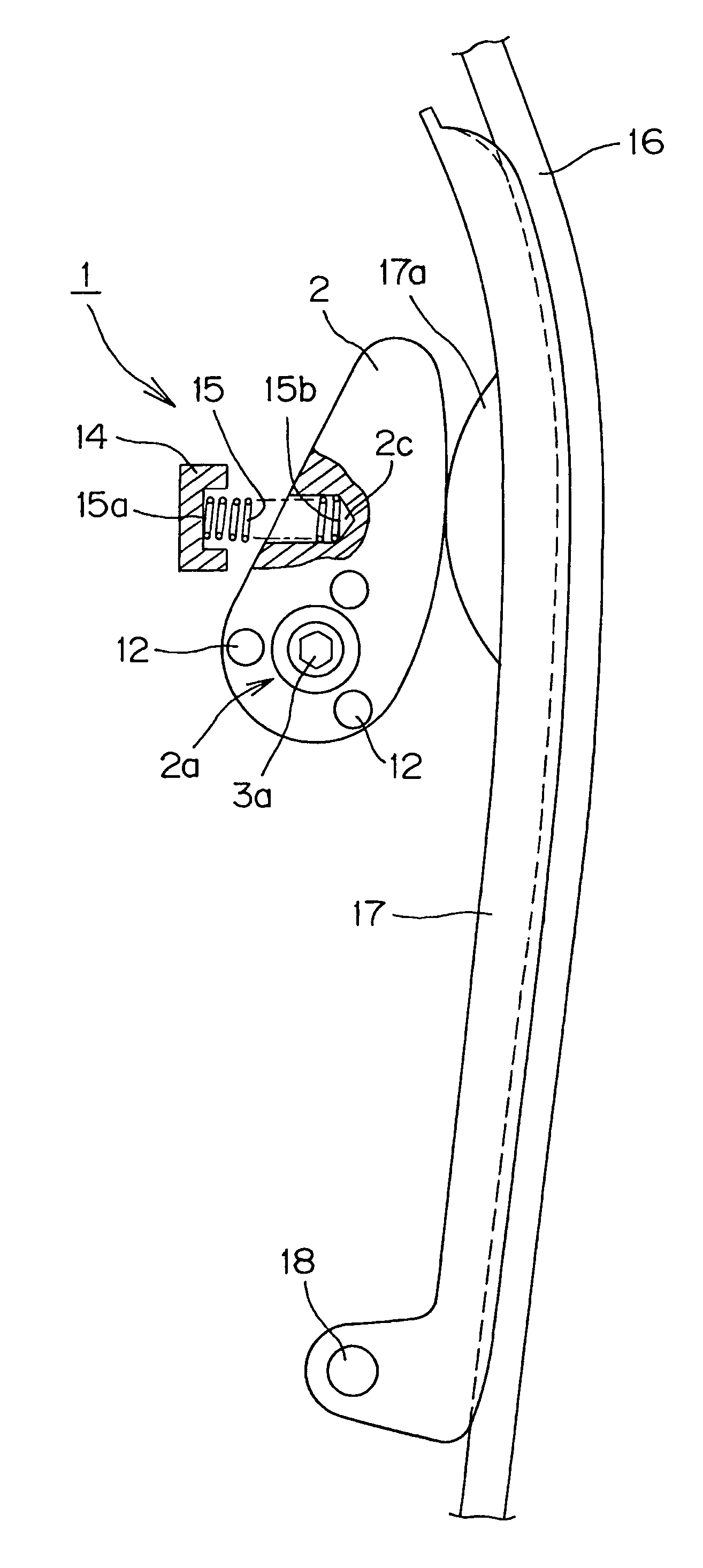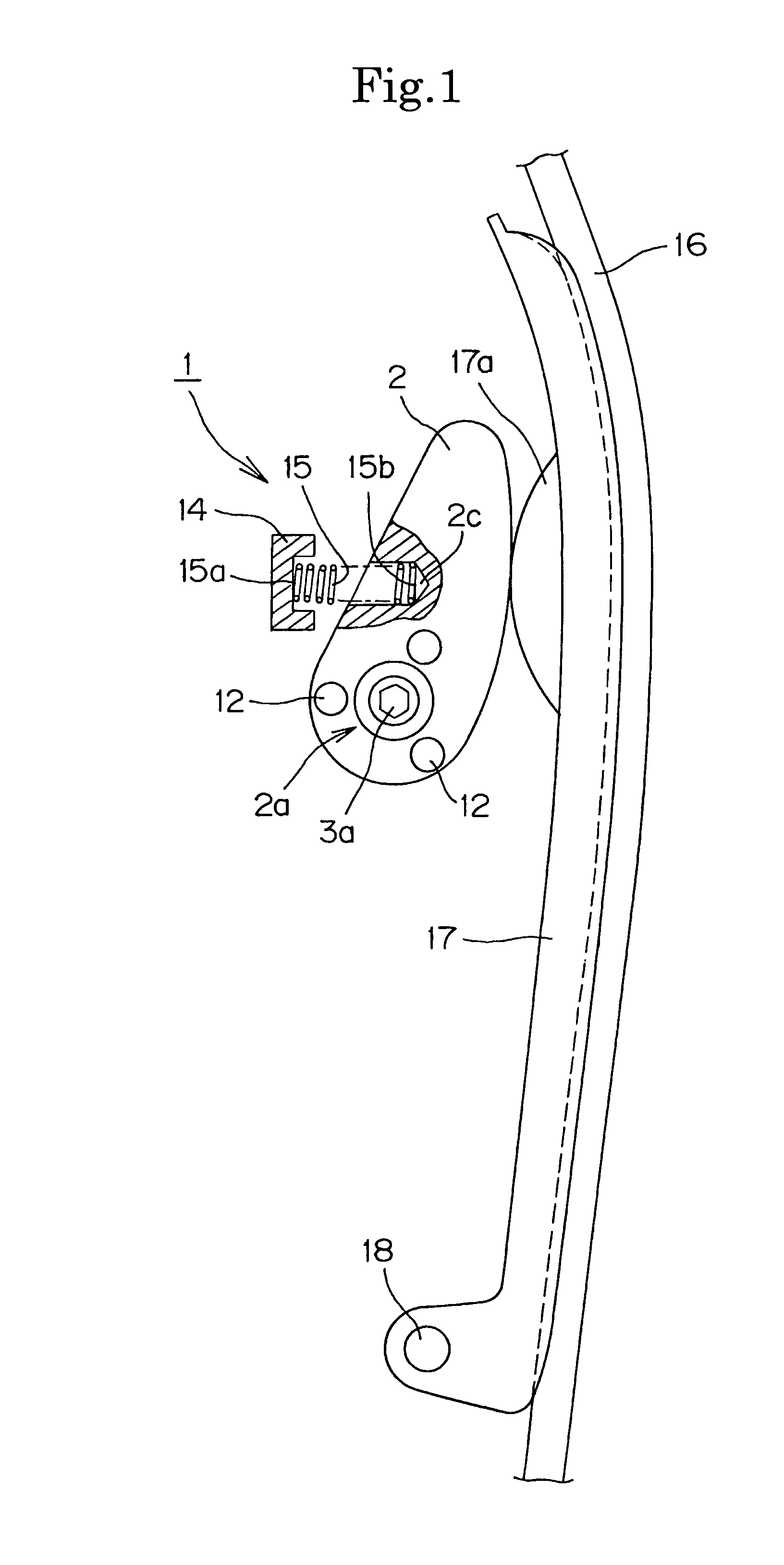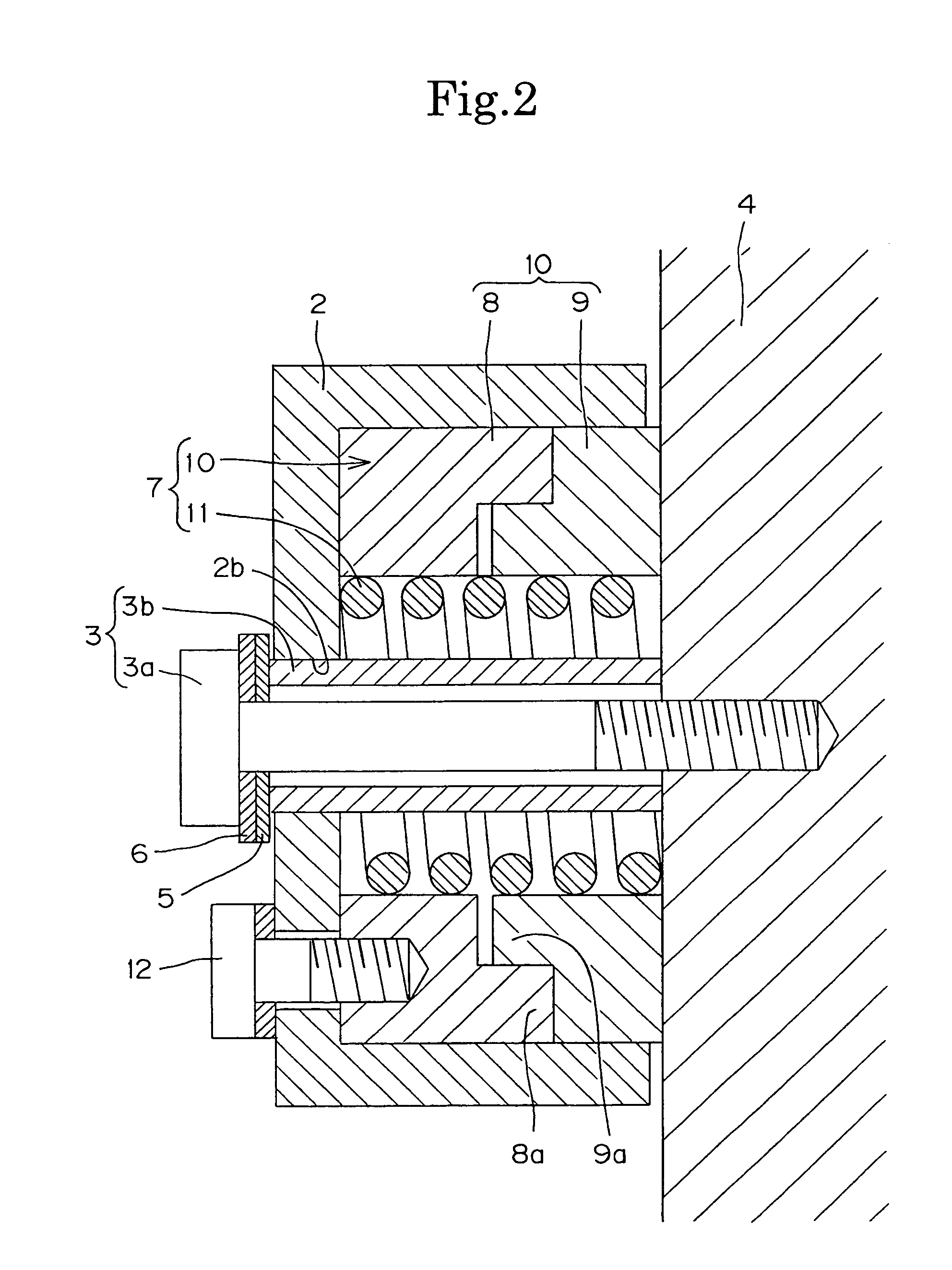Tensioner with one-way clutch
a one-way clutch and tensioner technology, which is applied in the field of tensioners, can solve the problems of high cost, high labor intensity, and vibration of the tensioner lever, and achieve the effects of reducing the diameter of the spring, simple structure, and easy assembly
- Summary
- Abstract
- Description
- Claims
- Application Information
AI Technical Summary
Benefits of technology
Problems solved by technology
Method used
Image
Examples
first embodiment
[0046]The tensioner is composed of a lever 22 having a one-way clutch 27 attached to its proximal portion 22a. The lever 22 is pivotally mounted on a base 24 by means of a shaft 23 and can be pivoted in a direction where tension is imparted to the chain or belt 16, but prevented by the one-way clutch 27 from pivoting in the opposite direction. The lever does not require an external biasing spring as in the case of the first embodiment, and accordingly can be hollow. However, if made hollow, it is preferably formed with an internal reinforcing rib 22f.
[0047]As shown in FIG. 5, the proximal portion of the lever 22 is mounted on a shaft 23 composed of a hex-head bolt 23a with a shaft 23b having a larger diameter than that of the shaft of bolt 3a. The shaft portion 23b of the shaft 23 extends, with a clearance, through a hole 22c in a boss 22b formed at the proximal portion 22a of the lever 22. The shaft 23 is attached to base 24 so that the lever 22 is pivotally mounted on the base 24...
second embodiment
[0054]In the operation of the tensioner of the second embodiment, a part of the lever 22 remote from the pivot axis presses against pad 17a of tensioner lever 17, urging the lever 17 so that it rotates about pin 18 and bears against the chain or belt 16, applying tension to the chain or belt.
[0055]As the chain or belt 16 loosens due to elongation over time, the lever 22 is gradually pivoted by the biasing force of the torsion coil spring 35 in a direction to increase the tension in the chain or belt 16. Pivoting of the lever 22 in the opposite direction is blocked by expansion of spring 31 against the inner circumferential surfaces of annular member 28 and 29. As a result, the tensioner lever 17 will always impart appropriate tension to the chain or belt 16 without backlash.
[0056]Here, as in the case of the first embodiment, the number of the parts is relatively small. Moreover, the compression spring and holder are eliminated. The tensioner can also be made light in weight, and its...
PUM
 Login to View More
Login to View More Abstract
Description
Claims
Application Information
 Login to View More
Login to View More - R&D
- Intellectual Property
- Life Sciences
- Materials
- Tech Scout
- Unparalleled Data Quality
- Higher Quality Content
- 60% Fewer Hallucinations
Browse by: Latest US Patents, China's latest patents, Technical Efficacy Thesaurus, Application Domain, Technology Topic, Popular Technical Reports.
© 2025 PatSnap. All rights reserved.Legal|Privacy policy|Modern Slavery Act Transparency Statement|Sitemap|About US| Contact US: help@patsnap.com



